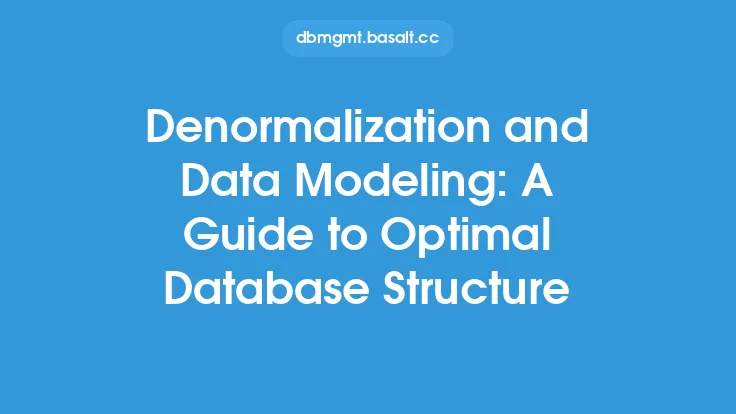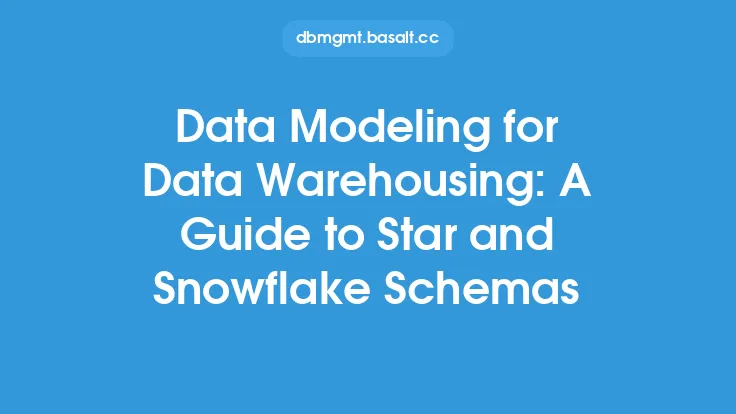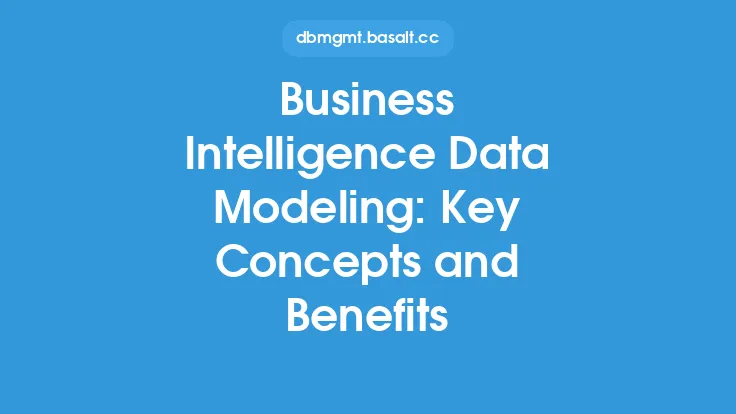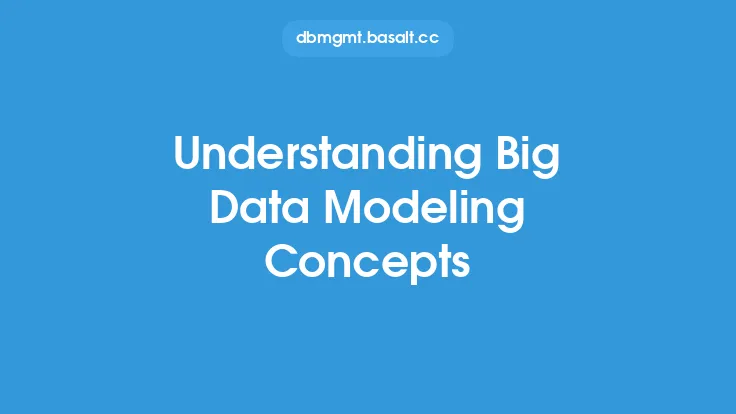Data modeling is a crucial aspect of database design, and it involves creating a conceptual representation of the data to be stored in a database. At its core, data modeling is about understanding the relationships between different data entities and organizing them in a way that supports efficient data storage, retrieval, and manipulation. In this article, we will delve into the fundamental principles and concepts of data modeling, exploring the key concepts, techniques, and best practices that underpin this critical discipline.
Key Concepts in Data Modeling
Data modeling involves several key concepts that are essential to understanding the principles and techniques involved. These concepts include entities, attributes, relationships, and data types. An entity is a thing or concept that has independent existence, such as a customer, order, or product. Attributes are the characteristics or properties of an entity, such as a customer's name, address, or phone number. Relationships refer to the connections between entities, such as a customer placing an order or an order being associated with a product. Data types, on the other hand, define the format and constraints of the data, such as integer, string, or date.
Data Modeling Techniques
There are several data modeling techniques that can be used to create a conceptual representation of the data. These techniques include entity-relationship modeling, object-role modeling, and dimensional modeling. Entity-relationship modeling is a popular technique that involves identifying entities, attributes, and relationships, and representing them using entity-relationship diagrams (ERDs). Object-role modeling is a technique that focuses on the roles that entities play in relationships, while dimensional modeling is a technique that is used to design data warehouses and business intelligence systems.
Data Modeling Principles
There are several principles that guide the data modeling process. These principles include simplicity, consistency, and flexibility. Simplicity refers to the idea that the data model should be easy to understand and navigate, with minimal complexity and redundancy. Consistency refers to the idea that the data model should be consistent in its representation of entities, attributes, and relationships, with clear and well-defined rules and constraints. Flexibility refers to the idea that the data model should be able to adapt to changing business requirements and evolving data needs.
Data Modeling Notations
There are several data modeling notations that can be used to represent the data model. These notations include entity-relationship diagrams (ERDs), object-role modeling diagrams (ORMs), and dimensional modeling diagrams. ERDs use a graphical notation to represent entities, attributes, and relationships, with rectangles representing entities, lines representing relationships, and attributes listed in a table or list. ORMs use a similar notation, but with a focus on the roles that entities play in relationships. Dimensional modeling diagrams use a star or snowflake schema to represent the relationships between facts and dimensions.
Data Modeling Tools
There are several data modeling tools that can be used to create, edit, and manage data models. These tools include data modeling software, database management systems, and data integration tools. Data modeling software provides a graphical interface for creating and editing data models, with features such as entity-relationship diagramming, data type definition, and relationship modeling. Database management systems provide a platform for implementing and managing the data model, with features such as data storage, querying, and indexing. Data integration tools provide a way to integrate data from multiple sources, with features such as data transformation, data mapping, and data quality checking.
Best Practices in Data Modeling
There are several best practices that can be followed to ensure that the data model is effective and efficient. These best practices include involving stakeholders in the data modeling process, using a consistent notation and terminology, and testing and validating the data model. Involving stakeholders in the data modeling process ensures that the data model meets the needs of the business and the users, with input and feedback from subject matter experts and end-users. Using a consistent notation and terminology ensures that the data model is clear and unambiguous, with a common language and set of concepts. Testing and validating the data model ensures that it is correct and effective, with data quality checks, data validation, and performance testing.
Common Data Modeling Mistakes
There are several common mistakes that can be made in data modeling, including over-normalization, under-normalization, and data redundancy. Over-normalization occurs when the data model is too complex and granular, with too many entities and relationships. Under-normalization occurs when the data model is too simple and flat, with too few entities and relationships. Data redundancy occurs when the same data is stored in multiple places, with inconsistencies and discrepancies between different versions of the data. These mistakes can lead to data quality problems, performance issues, and maintenance challenges, and can be avoided by following best practices and using data modeling tools and techniques.
Data Modeling and Data Governance
Data modeling is closely related to data governance, which refers to the policies, procedures, and standards that govern the management and use of data. Data governance involves ensuring that data is accurate, complete, and consistent, with clear rules and constraints for data creation, update, and deletion. Data modeling provides a foundation for data governance, by defining the structure and relationships of the data, and providing a framework for data quality checking and data validation. Data governance, in turn, provides a framework for managing and using the data model, with policies and procedures for data access, data security, and data compliance.
Conclusion
In conclusion, data modeling is a critical aspect of database design, and involves creating a conceptual representation of the data to be stored in a database. By understanding the key concepts, techniques, and best practices of data modeling, organizations can create effective and efficient data models that support their business needs and goals. Whether using entity-relationship modeling, object-role modeling, or dimensional modeling, data modeling provides a foundation for data governance, data quality, and data management, and is essential for ensuring that data is accurate, complete, and consistent. By following best practices and using data modeling tools and techniques, organizations can avoid common mistakes and create data models that are simple, consistent, and flexible, and that support their evolving data needs.





